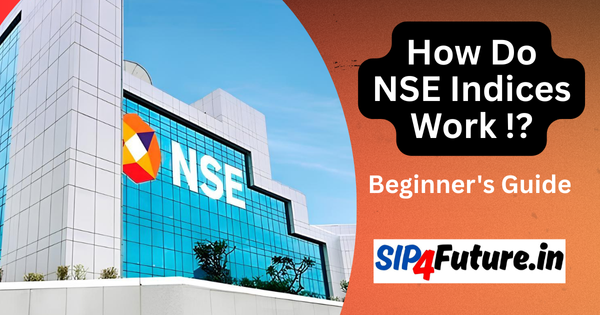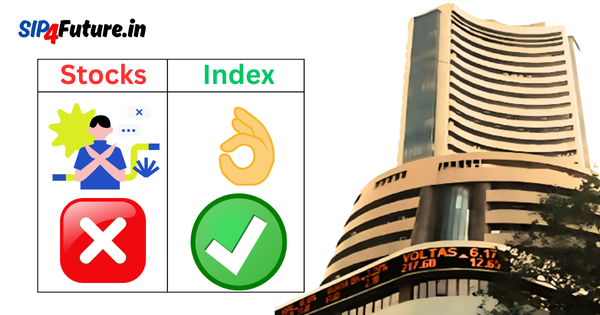Indus Towers Ltd, a leading telecom infrastructure provider, has delivered a stellar financial performance for FY2025, reinforcing its pivotal role in India’s telecommunications landscape. With a consolidated revenue increase of 5.3% to Rs. 30,123 crore and a remarkable 64.5% surge in net profit to Rs. 9,932 crore, Indus Towers has solidified its position as a key player in the sector. Listed on the National Stock Exchange (NSE) under the ticker INDUSTOWER, the company’s stock price stood at Rs. 408.20 on May 1, 2025, reflecting a 1.39% gain. This article delves into the drivers behind this robust performance, the impact of government decisions, global market influences, and the company’s outlook, while exploring the broader telecom sector dynamics.
What Drove Indus Towers’ Financial Success in FY2025?
Revenue and Profit Growth
Indus Towers reported a consolidated revenue of Rs. 30,123 crore in FY2025, a 5.3% increase year-over-year (YoY), driven by steady demand for telecom infrastructure amid India’s ongoing 5G rollout. The company’s net profit soared by 64.5% to Rs. 9,932 crore, a testament to operational efficiency and strategic expansions. EBITDA also saw a significant 41.9% rise to Rs. 20,845 crore, reflecting improved margins and cost management. These figures highlight Indus Towers’ ability to capitalize on the growing need for connectivity in both urban and rural markets.
Infrastructure Expansion
A key factor in this performance was the expansion of Indus Towers’ infrastructure. By March 31, 2025, the company’s tower base grew to 249,305, with co-locations reaching 405,435, achieving a sharing factor of 1.63. The acquisition of passive infrastructure from Bharti Airtel, including 10,380 macro towers and 2,226 lean co-locations, bolstered its portfolio. This strategic move, valued at Rs. 21.7 billion, is expected to generate revenue from FY2026, further strengthening the company’s growth trajectory.
| Metric | FY2025 | YoY Change |
|---|---|---|
| Consolidated Revenue | Rs. 30,123 Cr | +5.3% |
| Net Profit | Rs. 9,932 Cr | +64.5% |
| EBITDA | Rs. 20,845 Cr | +41.9% |
| Total Towers | 249,305 | Increased |
| Co-locations | 405,435 | Increased |
| Sharing Factor | 1.63 | Stable |
Operational Efficiency
Indus Towers’ focus on operational excellence played a crucial role. The company improved collections of past-due accounts, particularly from Vodafone Idea, following the government’s conversion of the telecom operator’s spectrum dues into equity. This eased financial pressures on Vodafone Idea, enabling it to secure Rs. 25,000 crore in debt funding for network expansion, directly benefiting Indus Towers’ cash flow.
How Has the Telecom Sector Influenced Indus Towers’ Performance?
5G Rollout and Demand Surge
The telecom sector in India is undergoing a transformative phase with the rapid deployment of 5G networks. Indus Towers, as a leading tower infrastructure provider, has been at the forefront, supporting major telecom operators like Bharti Airtel, Reliance Jio, and Vodafone Idea. The company’s capital expenditure of Rs. 85 billion in FY2025 was directed toward enhancing its tower portfolio to support 5G rollout and rural network expansion. This aligns with the government’s Digital India initiative, which emphasizes universal connectivity.
Sector Stability and Revenue Predictability
Unlike other sectors, telecom infrastructure offers stable, recurring revenue due to long-term tenancy agreements with telecom operators. Indus Towers benefits from this structure, as telecom players rely heavily on its towers for network continuity. The company’s ability to maintain a high sharing factor ensures efficient use of infrastructure, maximizing revenue per tower. As 5G monetization progresses, capital expenditure is expected to decrease, leading to higher free cash flows.
Competitive Landscape
While Indus Towers holds a dominant position, competition from satellite-based services like Starlink, which partnered with Airtel and Jio, briefly impacted its stock price in March 2025, causing an 8% dip. However, analysts clarified that Starlink complements rather than competes with tower infrastructure, as it focuses on remote connectivity. This reassured investors, contributing to the stock’s recovery.
What Government Decisions Have Impacted Indus Towers’ Stock Price?
Support for Vodafone Idea
The Indian government’s decision to convert Vodafone Idea’s spectrum dues into equity was a game-changer for Indus Towers. By alleviating Vodafone Idea’s financial burden, the government enabled the telecom operator to secure funding for network expansion, ensuring timely payments to Indus Towers. This move boosted investor confidence, as evidenced by a positive stock price trend following the announcement.
Telecom Policy Reforms
The government’s telecom reforms, including the 2021 relief package, have created a favorable environment for infrastructure providers. Measures like the removal of spectrum usage charges and extended payment tenures have strengthened telecom operators’ financial health, indirectly benefiting Indus Towers. The Department of Telecommunications continues to prioritize 5G spectrum auctions, driving demand for tower infrastructure.
Rural Connectivity Push
The government’s focus on rural connectivity under schemes like BharatNet has spurred demand for telecom infrastructure in underserved areas. Indus Towers’ strategic investments in rural tower expansion align with these initiatives, positioning it to capture additional market share. This has contributed to its robust financial performance and positive market sentiment.
How Do Global Market Dynamics Affect Indus Towers?
Global Telecom Trends
Globally, the telecom sector is witnessing increased investments in 5G and IoT (Internet of Things) infrastructure. India, as one of the fastest-growing telecom markets, attracts significant foreign investment, benefiting companies like Indus Towers. The company’s ability to scale its infrastructure aligns with global trends, enhancing its appeal to international investors. However, global trade disruptions, such as potential U.S. tariffs, could indirectly impact industrial output and economic growth in India, affecting telecom investments.
Currency and Commodity Fluctuations
Fluctuations in the Indian rupee and commodity prices, particularly steel used in tower construction, influence Indus Towers’ capital expenditure. A stable rupee in FY2025 supported cost management, but future volatility could pose challenges. The company’s focus on lean co-locations, which require less material, mitigates some of these risks.
Investor Sentiment
Global investor sentiment toward emerging markets like India remains positive, driven by the country’s economic growth and digital transformation. Indus Towers’ strong FY2025 performance, coupled with its alignment with India’s 5G ambitions, has attracted attention from institutional investors, as reflected in its market capitalization of Rs. 107,083.03 crore on NSE.
When Did Indus Towers’ Stock Price Reflect Its Performance?
Stock Price Movements
On May 1, 2025, Indus Towers’ stock price on the NSE was Rs. 408.20, up 1.39%, reflecting positive market sentiment following the FY2025 results announcement. The stock hit a 52-week high of Rs. 460.70 on September 2, 2024, and a low of Rs. 217.65 on February 22, 2024, indicating volatility influenced by sector developments and global market conditions.
Key Events Impacting Stock Price
- March 2025 Dip: The stock fell 8% on March 12, 2025, due to concerns over Starlink’s entry into India. Analyst clarifications that Starlink is complementary led to a recovery.
- Government Equity Conversion: The government’s support for Vodafone Idea in April 2025 boosted the stock, as it ensured payment stability.
- Q4 FY2025 Results: The announcement of a 64.5% profit surge on April 30, 2025, drove a positive stock price movement, with analysts upgrading their outlook.
| Date | Event | Stock Price Impact |
|---|---|---|
| March 12, 2025 | Starlink partnership concerns | -8% |
| April 3, 2025 | Government’s Vodafone Idea equity conversion | Positive trend |
| April 30, 2025 | Q4 FY2025 results announcement | +1.39% |
Analyst Ratings and Sentiment
Analysts have expressed optimism about Indus Towers’ stock. CRISIL Ratings revised its outlook to ‘Positive’ from ‘Stable’ in February 2025, reaffirming a ‘CRISIL AA+’ rating for the company’s debt instruments. However, Goldman Sachs maintained a ‘sell’ rating with a target price of Rs. 330, citing high capital expenditure concerns.
What Are the Risks and Challenges for Indus Towers?
High Capital Expenditure
While Indus Towers’ Rs. 85 billion investment in FY2025 supports growth, sustained high capital expenditure could strain free cash flow if 5G monetization is delayed. Analysts like Goldman Sachs have flagged this as a risk, impacting their bearish outlook.
Dependence on Key Clients
Indus Towers relies heavily on Bharti Airtel, Reliance Jio, and Vodafone Idea for revenue. Any financial distress among these operators, particularly Vodafone Idea, could affect collections. The government’s support has mitigated this risk, but it remains a concern.
Regulatory and Environmental Factors
Telecom infrastructure faces regulatory scrutiny over radiation and environmental impact. Compliance with Telecom Regulatory Authority of India (TRAI) guidelines and local regulations adds operational complexity. Additionally, geopolitical tensions, such as Pakistan’s remarks on the Indus Water Treaty, could indirectly affect market sentiment, though no direct impact on Indus Towers has been reported.
How Does Indus Towers Compare to Peers?
Bharti Airtel and Reliance Jio
While Bharti Airtel and Reliance Jio are telecom operators, Indus Towers serves as their infrastructure backbone. Airtel’s strong revenue growth and Jio’s subscriber base expansion indirectly boost Indus Towers’ tenancy ratios. Analyst target prices for Airtel (Rs. 1,925–2,000) and Jio’s parent Reliance Industries (Rs. 1,670) reflect sector optimism, which spills over to Indus Towers.
Vodafone Idea
Vodafone Idea’s financial recovery, aided by government intervention, has been a positive for Indus Towers. The company’s ability to clear past dues has strengthened Indus Towers’ balance sheet, though Vodafone Idea’s stock remains volatile at Rs. 8.
What Lies Ahead for Indus Towers?
Future Growth Drivers
Indus Towers is well-positioned to benefit from India’s 5G expansion and rural connectivity initiatives. The company’s focus on lean co-locations and tower portfolio optimization will drive efficiency. Revenue from the Bharti Airtel acquisition is expected to kick in from FY2026, further boosting profitability.
Analyst Price Targets
Analyst projections for Indus Towers’ stock price vary, reflecting differing views on capital expenditure and 5G monetization:
| Research Firm | Target Price (Rs.) | Outlook |
|---|---|---|
| BNP Paribas | 490 | Buy |
| ICICI Securities | 335 | Neutral |
| Goldman Sachs | 330 | Sell |
| BofA Securities | Not Specified | Buy |
Historical Returns
Indus Towers has delivered strong historical returns, with a 52-week range of Rs. 217.65 to Rs. 460.70 in FY2025. Over the past five years, the stock has provided annualized returns of approximately 15%, driven by the telecom sector’s growth. However, volatility due to sector-specific events and global market conditions remains a factor.
Conclusion
Indus Towers’ FY2025 performance underscores its resilience and strategic foresight in India’s dynamic telecom sector. With a 64.5% profit surge, robust revenue growth, and strategic infrastructure expansion, the company is poised for continued success. Government support, 5G rollout, and rural connectivity initiatives create a favorable environment, though challenges like high capital expenditure and client dependence warrant caution. As Indus Towers navigates these dynamics, its stock remains a compelling option for investors seeking exposure to India’s digital transformation.
Disclaimer: The information provided in this article is for educational purposes only and should not be considered financial advice. Investing in stocks involves risks, and past performance is not indicative of future results. Readers are advised to consult with certified financial advisors and conduct thorough research before making investment decisions. Data sourced from public platforms like Moneycontrol and BSE is subject to change, and investors should verify details independently.




